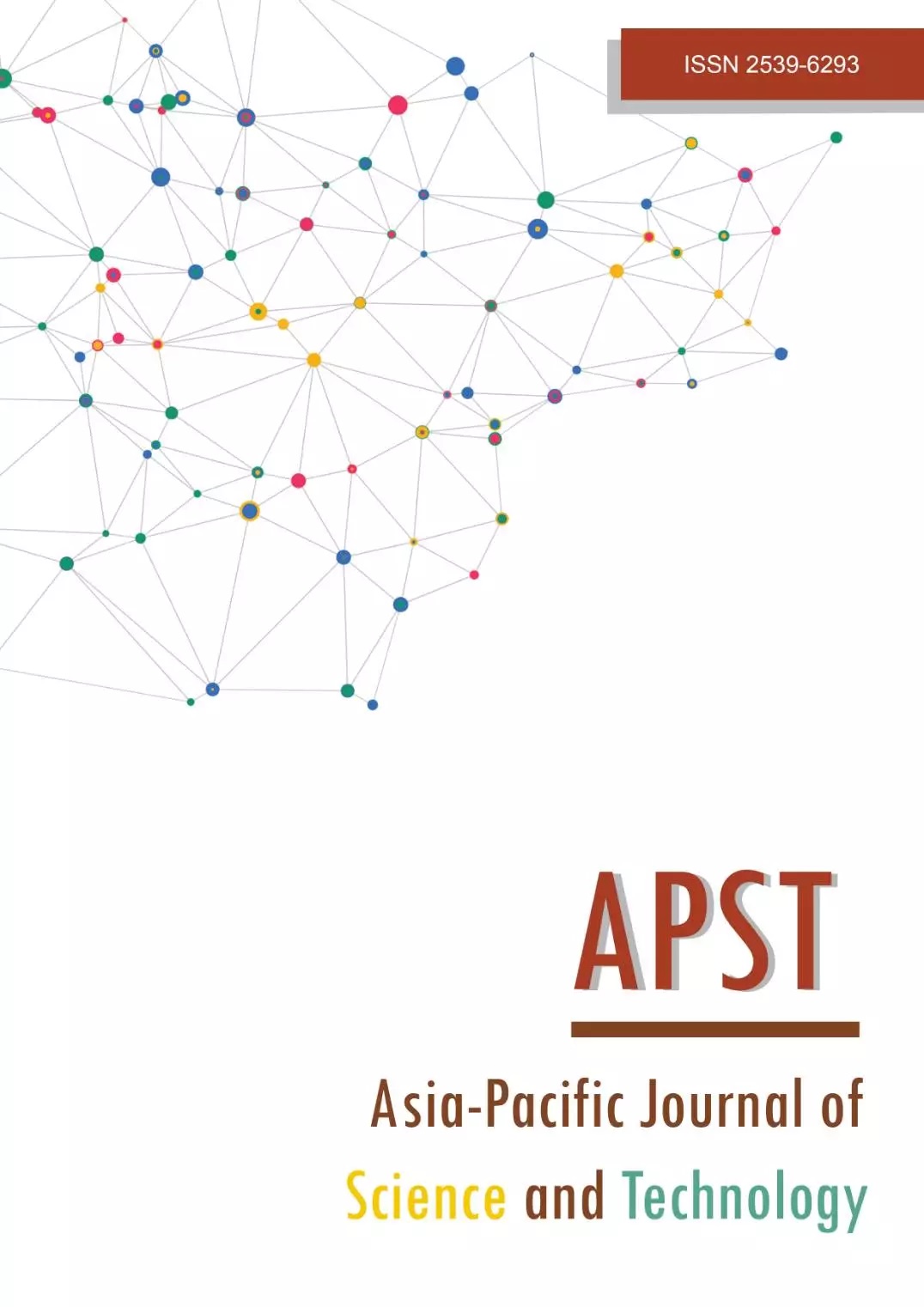A supervised machine learning approach for diagnosing Lassa fever and viral Hemorrhagic fever types reliant on observed signs
Main Article Content
Abstract
Lassa hemorrhagic fever is an infectious life-threatening fever characterized by bleeding caused by the single-stranded virus of the Arenaviridae virus family transmitted to humans via contact with blood, urine, food, or household items contaminated with rodent urine and/or feces, and other body secreted fluids from an infected person with the Lassa virus. The symptoms of this disease are fever, general weakness, malaise, headache, sore throat, chest pain, nausea, vomiting, bleeding from the mouth and nose just to name a few. In 2011, the World Health Organization (WHO) declared Lassa fever as an endemic and pandemic due to the spread of the Lassa virus in West African countries such as Benin, Ghana, Guinea, Liberia, Mali, Sierra Leone, and Nigeria respectively that has caused millions of death yearly due to a lack of early diagnosis of the ailment in this region. In the recent past, several systems have been developed to diagnose this endemic disease, but they generated a lot of false-negative during testing and were unable to detect Lassa fever, its overlapping symptoms, and Viral Hemorrhagic fever types. Hence, in this paper, we proposed and simulated a model to diagnose Lassa fever, and Viral Hemorrhagic fever types using a machine learning technique called Bayesian Belief Network. The model was designed using Bayes Server and tested with data collected from a Viral Hemorrhagic Fever medical repository. The model had 100% overall prediction accuracy based on test data; with 98.73% sensitivity of Lassa fever, and 98.98 sensitivity of Viral Hemorrhagic fever types in that order.
Article Details

This work is licensed under a Creative Commons Attribution-NonCommercial-NoDerivatives 4.0 International License.
References
Healthline Media [Internet]. New York: The Company; c2005-2022 [cited 2020 Dec 10]. Everything you need to know about fever. Available from: https://www.healthline.com/symptom/fever.
Garmel GM, Mahadevan SV. An introduction to clinical emergency medicine. 2nd ed. Cambridge: Cambridge University Press; 2012.
Longo DL, Fauci A, Kasper D, Hauser S, Jameson J, Loscalzo J. Harrison's principles of internal medicine. 18th ed. New York: McGraw-Hill; 2011.
Muhammad I, Nasir SA. Bedside techniques methods of clinical examination. 4th ed. Karachi: Paramount Publishing Enterprise; 2013.
Ferri FF. Protozoal infections. In: Ferri FF, editor. Ferri's color atlas and text of clinical medicine. 1st ed.
Amsterdam: Elsevier Health Sciences; 2009. p. 1159.
Hilson AJ. Pel-Ebstein fever. N Engl J Med. 1995;333(1):66-67.
Rolla LT. The eclectic practice of medicine. 1st ed. Ohio: The Scudder Brothers Company; 1906.
Government of South Australia [Internet]. South Australia; The Department; c2022 [cited 2020 Dec 27]. Viral haemorrhagic fever- including symptoms, treatment and prevention. Available from: https://www.sahealth.sa.gov.au/wps/wcm/connect/public+content/sa+health+internet/conditions/infectious+diseases/viral+haemorrhagic+fevers/viral+haemorrhagic+fevers+-+including+symptoms+treatment+and+prevention.
World Health Organization [Internet]. Geneva: The Organization; c2022 [cited 2020 Dec 28]. 2016 Report on Lassa fever. Available from: https://www.who.int/emergencies/diseases/lassa-fever 18.
Centre for Disease Control and Prevention [Internet]. The Department: c2021 [cited 2020 Dec 26]. What you need to know about Lassa fever. Available from: https://www.cdc.gov/vhf/lassa/.
World Health Organization [Internet]. Geneva: The Organization; c2022 [cited 2020 May 15]. Lassa fever. Available from: https://www.who.int/news-room/fact-sheets/detail/lassa-fever.
Tunmibi S, Adeniji O, Aregbesola A, Dasylva A. A rule based expert system for diagnosis of fever. Int J Adv Res. 2013;1(7):343-348.
Osigbemeh MS, Ogunwolu FO, Omoare AA, Inyiama HC. A linguistic fuzzy expert system for contagious diseases detection and isolation. UJMST. 2014;2(1-2):1-6.
Osaseri RO, Osaseri EI. Soft computing approach for diagnosis of Lassa fever. Int J Eng Comput. 2016;10(11):67416.
Abiola HM, Alaba AA, Joy DL. Expert system for Lassa fever diagnosis using rule based approach. Annals Comput Sci Ser. 2017;15(2):68-74.
Ajenaghughrure IB, Sujatha P, Akazue MI. Fuzzy based multi-fever symptom classifier diagnosis model. Int J Inf Technol Comput Sci. 2017;9(10):13-28.
Aminu EF, Ajani AA, Rabiu IO, Anda I, Isah AO, Zubairu HA. A diagnosis system for Lassa fever and related ailments using fuzzy logic. JOSTMED. 2018;14(2):18-30.
Nnebe SE, Okoh, NAO, Otumu JAM, Oshoiribhor EO. A neuro-fuzzy case based reasoning framework for detecting Lassa fever based on observed symptoms. AJAI. 2019;3(1):9-16.
Steur NAK, Mueller C. Classification of viral hemorrhagic fever focusing Ebola and Lassa fever using neural networks. Int J Mach Learn Comput. 2019;9(3):334-343.
Egwali A, Obi JC. An adaptive neuro-fuzzy inference system for diagnosis of EHF. Pac J Sci Technol. 2015;16(1):251-261.
Govinda SRM, Eswara RD. Siva Prasad diagnosis rule-based expert systems. Int J Eng Res Technol. 2013;2(8):551-561.
Djam XY, Wajiga GM, Kimbi YH, Blamah NV. A fuzzy expert system for the management of malaria. Int J Pure Appl Sci Technol. 2011;5(2):84-108.
Osarumwense AS, Eromosele BM. A machine learning based approach for detecting dengue Haemorrhagic fever. Int J Acad Appl Res. 2020;4(5):13-25.
Imanov E, Asengi FJ. Artificial intelligence for Lassa fever diagnosis system. In: Aliev RA, Kacprzyk J, Pedrycz W, Jamshidi M, Babanli M, Sadikoglu FM, editors. ICAFS 2020: 14th International Conference on Theory and Application of Fuzzy Systems and Soft Computing; 2020 Aug 27-28; Budva, Montenegro. London: Springer Nature; 2021. p. 540-547.
Alile SO. Application of bayesian networks in early diagnosis of cerebral malaria and mosquito-borne diseases based on observed symptoms. Int J Sci Res Multidiscip Stud. 2020;6(6):1-14.
Ibor AE, Oladeji FA, Okunoye OB, Ekabua OO. Conceptualisation of cyberattack prediction with deep learning. Cybersecurity. 2020;3(1):1-14.
Ibor AE, Oladeji FA, Okunoye OB. A survey of cyber security approaches for attack detection, prediction, and prevention. Int J Secur its Appl. 2018;12(4):15-28.
Gal IB, Ruggeri F, Faltin F, Kenett R. Bayesian networks. In: Ruggeri F, Kenett RS, Faltin FW, editors. Encyclopedia of statistics in quality and reliability. 1st ed. New Jersey: John Wiley and Sons, Ltd; 2007. p.1-6.
Health Data Government [Internet]. Washington: The Department; c2022 [cited 2020 Dec 20]. Viral hemorrhagic fevers, Crimean-Congo hemorrhagic fever virus to Guanarito virus - 2019. Available from: https://healthdata.gov/dataset/NNDSS-TABLE-1MM-Viral-hemorrhagic-fevers-Crimean-C/7txd-vbmk/data.


